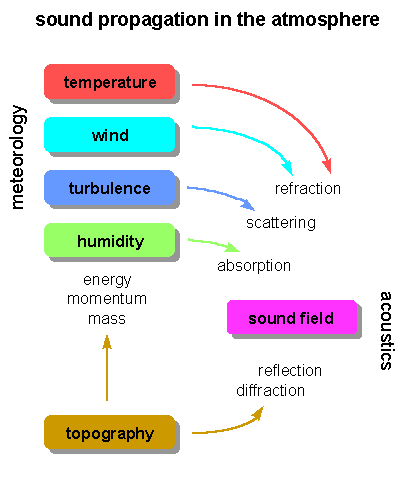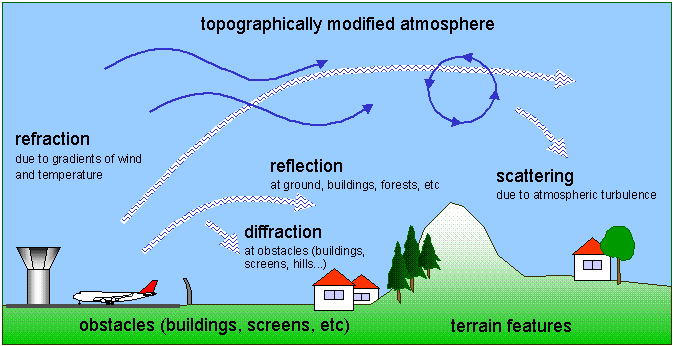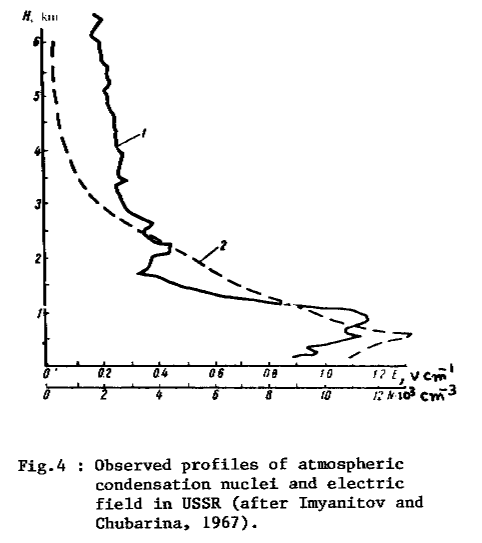
Unto K. Laine (created 15.1.2002)
This page is made for project team internal use only.
Please do not distribute this material before it is officially released.
The idea of this page is to help our mutual communication and the
change of views and ideas.
Please do not link this page to any of yours web pages! So we
may have this as our internal forum - at least for a while.
I will gradually collect comments and continue to develop this page
and the ideas related.
After critical reading and discussions of these ideas we may include the best of them in our coming publications.
Thank you for your time and comments!
(This page may be partly in Finnish, partly in English).
Foreword - a comment to the past and the present of this studyEspecially now when writing this I feet it was a good idea to start to use the concept Auroral Acoustics instead of Auroral Sounds!
From the very beginning of this project I made the decision not to limit the discussion and search for answers to some narrow sectors of acoustics. The idea - who ever it was - that the sound propagation and behavior may be different under geomagnetic storm thus making the ambient noise to sound different and strange - seems to be supported by the analyzed data.Today my feeling is that this really is an important part of this story. GM-storm will under certain meteorological conditions change the acoustics of the listening environment and thus transform the sounds - we are familiar with - into a very strange form. In these cases the energy of the sounds is mainly from the sources located somewhere in the environment. However, this may be only one aspect of the whole truth.
Additionally - I think - we have now found a reasonable hypothesis and candidate for a new type sound source in the lower atmosphere, a kind of Ion-Acoustic Instrument or System which can be "played" both electromagnetically and acoustically! This "instrument" may also produce sounds in response to some high energy cosmic particles (an idea originally formulated by Esa Turunen).
This all sounds fantastic! However, there is nothing new under the Sun. This is similar to the classical ideas presented by Aristotle. In his work Meteorology he describes "dry thunderstorm" as a subclass of all different types of thunderstorms. This is similar to the ordinary one, however, in this case the sky is clear, these is no rain and no indications of thunderbolts. Only the sounds. His Meteorology consists parts where he explicitly describes Aurora Borealis even if sometimes he believes that the scene is produced by some other mechanism. In some parts of his text hints to sounds associated with the phenomenon are given.
To summarize the present ideas, Auroral Sounds are not created by the (visual) aurora, but both the visual and the audible effects of the aurora are driven by the same source called geomagnetic storm and the "rain" of charged particles carried by the solar wind to the Earth. The visual aurora occurs in the higher atmosphere, above the ionosphere (over 80 km) whereas the audible aurora may occur simultaneously in the lower atmosphere (below 1-2 km) if the meteorological conditions are favorable. The charged high speed particles guide the visual theater (display) in the high altitudes and causes geomagnetic disturbances. These disturbances in their turn play the Ion-Acoustic Instrument (System) in the lower altitudes. This explains why the audio effects (on the average) can be perceived only 2-3 seconds after the visual ones.
To Add: Same type of mechanism could explain the noisy sounds detected on the earth when large meteorites fly into the upper atmosphere. Probably these sounds are not produced always. Here too the meteorological conditions may play a role. Another idea is that the whole space between the ionosphere and the Earth is a chamber of ionized air thus having similar properties than the mentioned Ion-Acoustic System (IAS). I would like to mention that the ion-acoustic waves do behave quite differently than the conventional "pure" acoustic waves.
The chamber of ionized air seems to transform the electro-magnetic Schumann resonances to acoustical ones! In many recordings during nights with or without an aurora the audio signal shows sharp peaks close to the Schumann resonances. Sometimes the peaks are only a little higher in amplitude than the surrounding amplitudes, however, still quite easy to detect. There are often sharp resonances close to, e.g., 7, 15, 23, 31, 45 and 60 Hz. Not all but some of them are present simultaneously. Also these phenomena may be explained by the theory of ion-acoustic waves. Thus these effects are there all the time. The whole atmosphere is continuously singing the music of its own. There are some groups around the world trying to understand the hum sound, mostly close to 17.5 Hz sometimes higher at 22-23 Hz. The hum can be detected probably around the world also far away from any industrial or traffic noise sources. Presently there are no theories or hypotheses how to explain these sounds. Some of the most sensitive people are even suffering from this strange noise.
There are also some other mysterious sound effects which may be explained with the ion-acoustic system. Let us return to those later.
I think - that also Esa mentioned that one possible reason why auroral sounds are not always heard could be related to different meteorological conditions. Thus there should be something common with those meteorological conditions where sounds are detected as well as with those cases sounds are not detected.
The possible sound sources, so far there are also relatively high frequency components detected, can not be located far away from the point of observations. The atmospheric attenuation increases toward the higher frequencies thus hindering any communication and transmission of sound over longer distances. Also, the relatively short delays between electrical and acoustical crackling measured at Koli speaks for some electric discharging mechanisms (sparks) in a distance of 600 m to 2-3 km. When the delay between the electrical (VLF) and acoustical cracklings increases the acoustical signal clearly attenuates and is more deeply lowpass filtered. Both of these indicate longer propagation in the atmosphere.
My hypothesis is that these sounds are created in a layer about 600-1200 m above the surface of the Earth and the longer delays in the propagation indicate that the source can be located aslope up (obliquely) seen from the place of observations. Hence the minimum delay gives an estimate for the altitude of the sound source layer and the longer delays represent sound sources on the same layer, more or less sideward from the place of observation.
Around fall 2000 I started to study the basics of meteorology in order to understand the processes of the lower atmosphere. My attention was focused to the possible role of the inversion layer - I think we had some discussions about this also with Esa. The layer is "on the right place", however there was no knowledge about its electrical properties. Most part of the literature describes this layer as "electrically neutral". Only in relation to the thunderstorms the atmosphere at this altitude starts to be strongly electrically charged consisting of negative ions. Also we know that many times the lower sides of the clouds around this altitude have negative charges whereas the upper part may be positively changed.
The temperature inversion layer was in principle located "on the right
place", however, it was electrically "neutral" thus being not able to produce
any geomagnetically determined acoustical effects. In parallel with
these ideas I continued to work further with other lines.

This is the classical view of the different aspects of sound propagation in the atmosphere mainly formulated in the late 19th century. Many meteorological parameters affect the behavior of the sound. In the classical theory for the sound propagation in the atmosphere, the media, air, its physical properties, the possible layers with different meteorological conditions have been in the focus of the discussion. The possible effects of electricity, geomagnetic fields, etc., have not been analyzed in detail. The only case studied more carefully is the process of thunderstorm. However, also this phenomenon is not yet fully understood and still has many open questions.

The standard explanation of the duct effect is:
"These long distances are possible because of the different densities and refractive qualities of warm and cool air. The sudden change in density when a radio wave enters the warm air above a duct causes the wave to be refracted back toward Earth. "Have we forgot something? Up to now I have not found any reference able to answer this question: Is that really possible that the duck effect is caused by the electromagnetically neutral air alone!? Radio waves are more often reflected due to the ionized layers just like in the case of the ionosphere. Could the case of the inversion be an exception? Today I strongly doubt that pure neutral air could bring about these reflections. If we go back to the basics and ask what typically happens when warm, humid air rises from the ground higher up to the atmosphere, the answer is: it carries negative ions from the ground higher up to the level of the inversion. This is clear in the warm days of the summer. The electrically charged clouds are formed just with this mechanism. However, the process of the lift of ions is probably much stronger in the hot summer than in the fall or spring evenings. Why the formation of temperature inverse in the fall, winter and spring should principally differ from that we know from the hot summer days? Why in this case the air is not able to carry any ions to the higher altitudes? Anyway, we may have thunderstorms also in the middle of the winter.
Presently I feel that the ion lifting mechanism of warm, humid air is for some reason not recognized in the context of the temperature inverse. Thus the radio waves "must" reflect back from the pure temperature and density gradient of the air - not due to the ions in the same layer!
Meanwhile the warm (ionized) air flows up it blocks (suppresses) the normal flow of positive ions from the higher altitudes toward the ground. There may be a formation of even two ionized layers: the upper one positively charged and the lower one negatively charged. If the air between these layers is dry they are relatively well isolated. Also, there may occur some horizontal air flow at those altitudes hindering any strong connection between the layers. This may be like a huge charged capacitor. Depending on the amount of negative and positive charges these layers should affect the static electric field close to the ground. (Do anyone know any studies on this topic: inversion vs. electric field? What about inversion vs. VLF?).
If there has been a hole in our knowledge related to the electrical
properties of the inversion and if there is a proper ion layer (or layers)
involved, we could have a good change to explain most of the mysteries
related to the phenomenon called auroral sounds.
A search engine picked up an interesting paper: P.Sikka & al. : Possible Solar Influence on Atmospheric Electric Field. The paper referres to a Russian work (Imyanitov and Chubarina, 1967) where electric field distribution in the lower troposphere was analyzed. The study shows that the maximum strenght of the electric field is found just below the temperature inversion, typically below 1 km altitude! Above this layer the conductance of the air increases and the stength of the field gradually deacreases (see Fig. below).

The figure shows a clear peak in the strength of the electric field around 600-700 m altitude. The geomagnetic storm will change the picture, however, the max field value may still be located around those hights. This fits well the measured smallest delays between the acoustic and electric crackling sounds in the Koli data.
Due to good conductivity of the layers above 1 km it is clear that the charges from the upper atmosphere can flow dawn relatively easily close to the layers of smaller conductivity. Thus it is possible that during a geomagnetic storm the highest strength in the electric field is just around the hight of 600-800 m.
Another question is the role of the jet flow around 10 km altitude.
April 6.-7.2000 and April 11.-12. 2001 during the two most "noisy" aurorae
there was a clear jet flow associated. Comparisions to the case March 27.-28.2001
is not yet fully performed, however, the jet flow may be an important catalyzer.
A hypothesis is that the jet flow helps to carry changes down (by a vortex)
close to the max electric field hight and thus form cloud of ionized gas
able to produce an IAS and finally the sounds.
The IAS as a possible AM/SW receiver
The IAS as a plasma loudspeaker
The IAS as a noise generator
The IAS as a generator of musical tones
The IAS as a impulse generator (by cosmic particles)
Other nonlinear processes of the IAS
Barking dog in the distance (Karkkila 27.3.2001)
- musical tones excited by the barking sounds in the IAS?
- generation of reverberations (narrow ion-acoustic bandpass filters)
by the IAS?
SW/AM Radio (Karkkila 27.3.2001)
- down modulated and electro-acoustically transformed radio signal?
Crackling sounds (Koli 11.-12.4.2001)
Popping (bang) sounds (Koli 11.-12.4.2001)
zzz